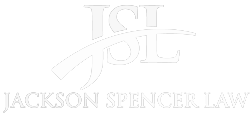Whether you are returning to work or have been working since the beginning of the COVID-19 pandemic, you probably have questions about safety. It is important that your employer take precautions to ensure the safety of all employees, as well as customers, if they want to re-open a brick-and-mortar location.
While there are plenty of questions (and arguments) about what is best to protect individual health during this pandemic, two government agencies have provided helpful guidance. The Center for Disease Control (CDC) and Occupational Safety and Health Administration (OSHA) have issued health guidelines for individuals and businesses regarding COVID-19.
In this article, we will cover several of those guidelines – empowering employees to protect their health when returning to work.
First, let’s look at some of the general “Guidelines for Opening Up America Again.”
- Follow state and local guidance, particularly with respect to face coverings
- Practice good hygiene, especially hand washing
- Stay home if you feel sick and consult your medical provider
- Employers should implement policies in accordance with industry best practices and government regulations
Admittedly, enforcement of these guidelines varies widely from state-to-state and even within states and counties. However, they provide a baseline for best practices.
At Jackson Spencer Law, we represent employees who have questions about their workplaces’ responses to COVID-19.
Visit our services page for information about all the ways we can help.
Phases of Reopening
To better understand what is expected of employers at different stages of the “Guidelines for Opening Up America Again,” you will want to understand that regions are re-opening in phases.
Before starting a phased reopening, states and regions that are complying with the guidelines need to show a downward trajectory of influenza and COVID-like illnesses within a 14-day period. There must also be a downward trajectory of documented cases and positive tests for a 14-day period. Finally, regional hospitals must treat all patients without crisis care and have a robust testing program in place for at-risk healthcare workers. Once these criteria are met, localities can move toward the phased re-opening.
Phase One employs the greatest restrictions of each phase. In this stage, employers should still encourage telework whenever possible, enforce social distancing, and minimize non-essential travel. Employers should also consider special accommodations for vulnerable personnel.
In Phase Two, employers should continue to encourage telework and close common areas. However, non-essential travel can resume. States and regions can only move to Phase Two after they meet the criteria for Phase One and show no evidence of a rebound.
For areas that meet the criteria of Phases One and Two and show no evidence of a rebound employers can resume unrestricted staffing of the workplace.
CDC Guidelines for Workplaces Regarding COVID-19
The CDC continues to provide guidance for individuals on how they can protect themselves and reduce the spread. They suggest wearing a mask, social distancing, and practicing good hygiene. We recommend checking out the CDC guidance, because they continually update their recommendations and have different suggestions for various situations (like caring for children or exposure to vulnerable populations).
One of the most important things you can do is monitor your own health and take precautions if you experience any COVID-like symptoms. In the workplace, you will want to clean and disinfect frequently touched surfaces and avoid sharing objects others have touched.
The CDC also recommends that office buildings are checked for proper ventilation. When possible, workplaces should open windows and doors to increase air circulation in the building. The rest of the CDC guidelines for businesses falls in line with the OSHA guidance specifically designed for protecting the health and safety of employees.
Let’s dive into those OSHA guidelines because they are particularly relevant to returning to work.
What is the OSHA Guidance for Returning to Work?
OSHA has provided a detailed guidance document for employers outlining strategies for basic hygiene, social distancing, identification of sick employees, and other workplace controls. In accordance with CDC and White House guidelines, OSHA asks that employers implement different policies during different phases.
Regardless of the local re-opening phase, employers should implement hazard assessments to determine sources of potential exposure for employees. For instance, employers can assess the tasks performed by each employee that might involve exposure to COVID-19. This should include an assessment of the current outbreak conditions in the community and how often employees interact with the public.
Employers should also strictly enforce hygiene practices like handwashing and sanitation of high-traffic areas. Employees should be trained on respiratory etiquette (like coughing and sneezing into one’s elbow instead of one’s hands). Social distancing should be followed by limiting business occupancy, demarcating zones that encourage distancing, and posting signs to remind employees and customers of current health policies.
In addition to preventative measures, employers should have a policy for identifying and isolating sick employees to curb any workplace spread. Once a worker has shown symptoms or tested positive for coronavirus, it’s imperative that employers follow CDC guidance for discontinuing self-quarantine. Any employees that have been exposed to a symptomatic individual should also be monitored for any symptoms themselves.
When feasible, employers should have safety controls like physical barriers and personal protective equipment (like face masks) to reduce occupational hazards. From an administrative standpoint, employers may be able to stagger work shifts, limit the number of people in a breakroom at any given time, and replace in-person meetings with video conferences or phone calls.
Employers Cannot Retaliate
From your position as an employee, one of the most important things to remember is that employers are prohibited from retaliating against you for adhering to CDC or OSHA guidelines or raising workplace safety and health concerns.
If you have safety concerns about your workplace, or if you have pointed out safety concerns and experienced any form of retaliation, Jackson Spencer Law can help. Contact us for a free comprehensive assessment to ensure your employer is following all local, state, and federal regulations with respect to the pandemic.
Table of Contents

